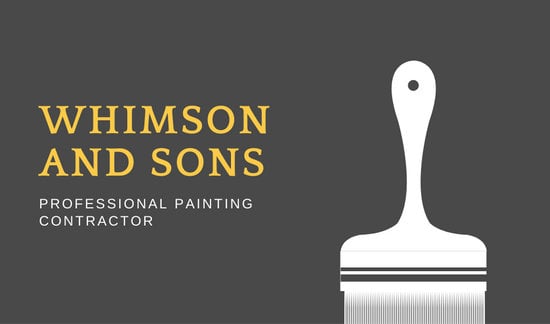Explore The Influence Of Seasonal Elements On The Effectiveness Of Industrial External Painting And Determine The Ideal Times To Achieve Long-Lasting Results For Your Job
Explore The Influence Of Seasonal Elements On The Effectiveness Of Industrial External Painting And Determine The Ideal Times To Achieve Long-Lasting Results For Your Job
Blog Article
Composed By-Regan Bagger
When you're planning an industrial exterior paint task, seasonal aspects can make or break your results. You'll intend to take into consideration how temperature and humidity impact paint application and drying out times. Selecting the right season can ensure your paint adheres appropriately and lasts longer. Yet which seasons are truly the most effective for this kind of work? Let's discover the crucial elements that can impact your job's success.
The Influence of Temperature Level on Paint Application
When you're preparing a commercial external paint task, the temperature can significantly impact exactly how well the paint sticks and dries.
Preferably, you wish to repaint when temperatures range in between 50 ° F and 85 ° F. If it's also chilly, the paint might not heal effectively, leading to problems like peeling off or cracking.
On the flip side, if it's also hot, the paint can dry out too quickly, stopping correct attachment and resulting in an irregular finish.
You must additionally consider the time of day; early morning or late afternoon supplies cooler temperatures, which can be much more beneficial.
Always inspect visit my website for the details paint you're making use of, as they commonly supply advice on the excellent temperature range for optimal outcomes.
Humidity and Its Effect on Drying Times
Temperature isn't the only environmental variable that influences your industrial external paint task; moisture plays a substantial duty too. High moisture degrees can decrease drying out times significantly, affecting the overall high quality of your paint work.
When the air is saturated with wetness, the paint takes longer to heal, which can lead to concerns like inadequate attachment and a greater danger of mildew growth. If you're painting on an especially humid day, be gotten ready for extended delay times between layers.
relevant resource site to monitor neighborhood climate condition and strategy accordingly. Ideally, go for humidity degrees in between 40% and 70% for optimum drying out.
Maintaining these factors in mind ensures your project remains on track and provides a long-term surface.
Best Seasons for Commercial Exterior Painting Projects
What's the best season for your business outside painting projects?
Spring and very early autumn are normally your best choices. During these periods, temperatures are mild, and humidity degrees are usually lower, creating suitable conditions for paint application and drying.
Prevent summer's intense heat, which can trigger paint to completely dry too swiftly, bring about inadequate attachment and finish. In a similar way, wintertime's cool temperature levels can hinder correct drying and healing, taking the chance of the long life of your paint job.
interior painters claremore for days with temperature levels in between 50 ° F and 85 ° F for optimum outcomes. Remember to check https://azbigmedia.com/lifestyle/home-and-design/5-essential-tips-for-painting-a-house/ for rain, as damp problems can wreck your job.
Planning around these factors guarantees your paint task runs efficiently and lasts longer.
Conclusion
Finally, intending your commercial external paint jobs around seasonal factors to consider can make a significant distinction in the result. By scheduling work during the excellent temperature levels and humidity degrees, you'll ensure better adhesion and drying out times. Remember to keep an eye on neighborhood weather forecasts and pick the right time of year-- spring and early fall are your best choices. Taking these actions will certainly help you attain a sturdy and expert surface that lasts.
